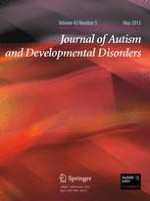01-05-2012 | Original Paper
Applied Behavior Analysis Programs for Autism: Sibling Psychosocial Adjustment During and Following Intervention Use
Gepubliceerd in: Journal of Autism and Developmental Disorders | Uitgave 5/2012
Log in om toegang te krijgenAbstract
Psychosocial adjustment in siblings of children with autism whose families were using a home-based, applied behavior analysis (ABA) program was compared to that of siblings in families who were not using any intensive autism intervention. Data gathered from parents, siblings and teachers indicated that siblings in ABA families experienced neither significant drawbacks nor benefits in terms of their behavioral adjustment, sibling relationship quality and self-concept compared to control group siblings, either during or following intervention use. Parents and siblings perceived improvements in sibling interaction since the outset of ABA, with parents somewhat more positive in their views than were siblings. Social support was associated with better sibling outcomes in all groups. Implications for supporting families using ABA are considered.
